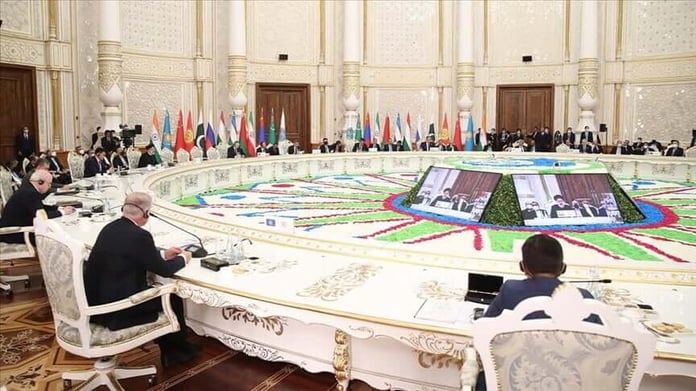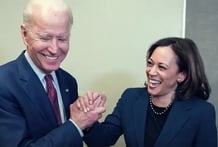
- The summits of the Shanghai Cooperation Organization and the Collective Security Treaty Organization, discuss issues of recognition of the rule of the “Taliban” in Afghanistan and bilateral relations and cooperation with it
Moscow may ask Dushanbe not to support ethnic Tajik resistance in Afghanistan to the “Taliban”
The Tajik capital, Dushanbe, will host Thursday and Friday two important summits of the Shanghai Cooperation Organization (SCO) and the Collective Security Treaty Organization (CSTO), to discuss issues related to Afghanistan.
The Shanghai Cooperation Organization includes Russia, India, Kazakhstan, China, Kyrgyzstan, Pakistan, Tajikistan, Uzbekistan and Iran, and Afghanistan, Belarus and Mongolia have observer status, and Turkey, Azerbaijan, Armenia, Cambodia, Nepal and Sri Lanka are the dialogue partners of the organization.
This will be the first major meeting of the countries of the region since the “Taliban” announced the formation of its interim government in Kabul on September 7.
The President of Tajikistan Emomali Rahmon will also chair the CSTO session, which is scheduled to be attended by the presidents of Kazakhstan, Kyrgyzstan, Belarus, Russia and the Prime Minister of Armenia.
Founded in 1992, the CSTO includes Russia, Kazakhstan, Kyrgyzstan, and Tajikistan (also members of the Shanghai Cooperation Organization), as well as Armenia and Belarus (the SCO observer states).
After the virtual meeting on August 23, the Secretary-General of the Collective Security Treaty Organization, Stanislav Zas, said that the leaders agreed to join efforts with member states of the organization and other international organizations on the Afghan issue.
** Strengthening “deterrence” and not supporting “resistance”
Russia is keen to restore and affirm its role as a protective force for the Central Asian countries to keep them under its wing and to re-modernize its weapons system.
According to Valery Simrikov, Deputy Secretary-General of the Collective Security Treaty Organization, the leaders will agree on a plan to provide the Collective Rapid Reaction Force (CRRF) with modern weapons and equipment.
The Collective Rapid Reaction Force was established in 2009 as a joint task force consisting of military units independent of the Collective Security Treaty Organization, with the aim of countering limited military aggression against member states, countering terrorism and drug smuggling.
Simrikov said that this decision comes amid concerns about future developments in Afghanistan and their possible negative consequences for the situation in Central Asia.
He added that there are increasing threats to Russia’s strategic defense assets in Central Asian countries.
It is worth noting that the arrival of the “Taliban” to power in Afghanistan provided many opportunities for Russia and China to expand their influence in South and Central Asia.
Given the guarantees of stability sought by Russia, Uzbekistan and Turkmenistan, and the prevention of extremist groups from crossing from Afghanistan, there are possibilities that these countries will try to persuade Dushanbe not to support the Tajik minority in Afghanistan and its leaders militarily, and not to allow them to continue the resistance against the new regime in Kabul.
** Russian interests
Russian defense expert Shamil Garev said that Moscow may not encourage the CSTO to provide tacit military support to the Northern Alliance, as was the case with Panjshir leader Ahmed Shah Massoud during the first Taliban rule (1996-2001).
Russia is careful not to distract its Central Asian partners by US requests to allow its military presence to conduct operations in Afghanistan.
Therefore, in August, the Russian forces conducted bilateral military exercises with Uzbekistan and Tajikistan.
This was followed by the Joint Frontiers 2021 exercise of the Collective Rapid Deployment Force (CRDF) of the Collective Security Treaty Organization, which was held in Kyrgyzstan from September 5 to 9, with the participation of military personnel from Kazakhstan and Russia.
Moreover, the special forces units of the Kyrgyz Interior Ministry participated in the exercises, which included maneuvers of Su-25 attack fighters, Mi-8 helicopters and Orlan-10 drones.
The ZU-23-2 air defense unit of the Kyrgyz Army also took part in the exercises, and the BM-21 Grad multiple launcher system was also tested.
In addition to the Orlan 10 drones, the Arrow-2M shoulder-fired missiles, and the Su-30 SM aircraft in Kazakhstan coordinating ground and air combat operations.
The two high-level meetings between regional and global powers are expected to come out with a clear understanding of dealing with Afghanistan, and ways to move forward in the issues of recognition, bilateral relations and multilateral cooperation with the Taliban in the coming months.












